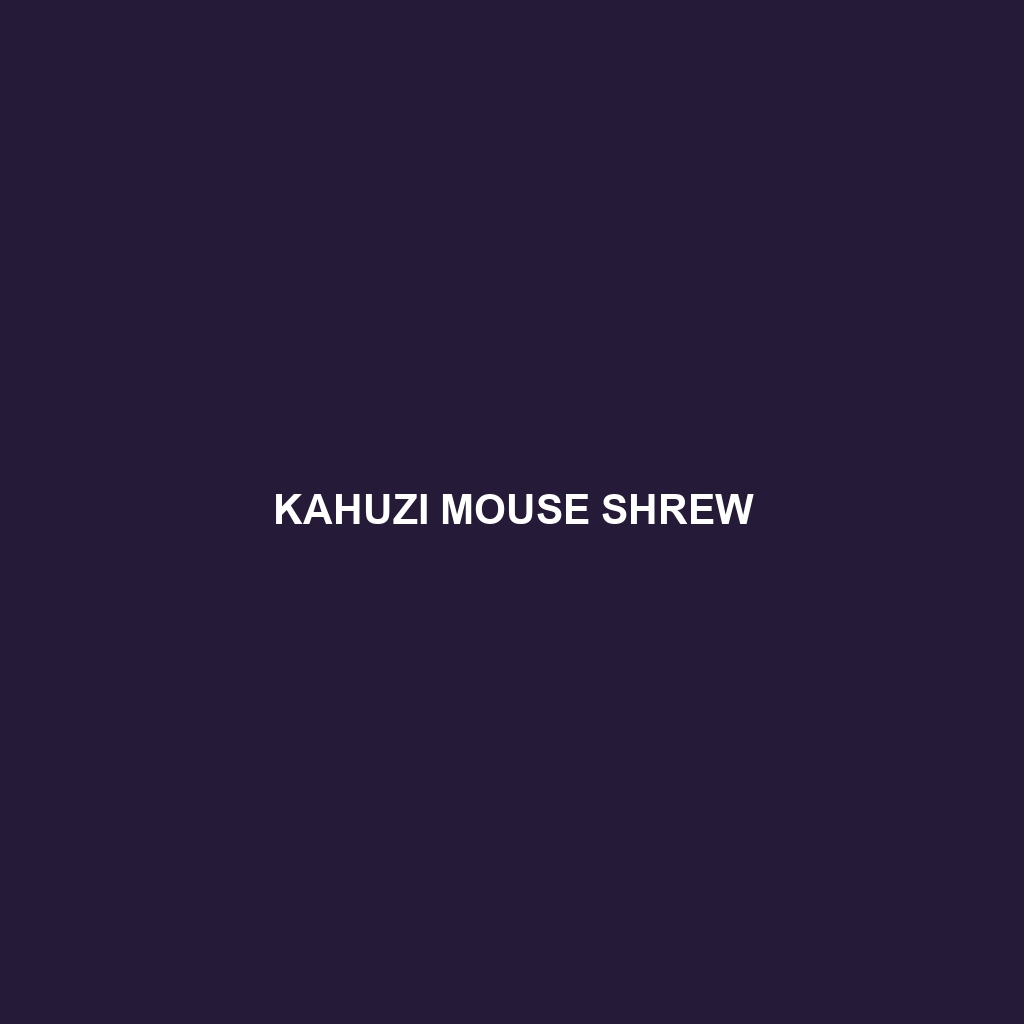Kahuzi Mouse Shrew
Common Name: Kahuzi Mouse Shrew
Scientific Name: Myosorex varius
Habitat
The Kahuzi Mouse Shrew is primarily found in the Kahuzi-Biéga National Park located in the eastern Democratic Republic of Congo. This species thrives in humid montane forests, where dense undergrowth and leaf litter provide ideal conditions for foraging and nesting. These areas are characterized by rich biodiversity and relatively stable temperatures, contributing to the mouse shrew’s survival.
Physical Characteristics
The Kahuzi Mouse Shrew measures about 10-12 centimeters in length, excluding the tail, which can add an additional 5-8 centimeters. It typically has a soft, dense fur that is dark brown to grayish in color. Notable features include its elongated snout and small, rounded ears, which enhance its sensory capabilities. The species exhibits a slender body structure and is often mistaken for other small mammals due to its size and shape.
Behavior
This nocturnal species is known for its agile movements, allowing it to navigate through the undergrowth with ease. Kahuzi Mouse Shrews are solitary creatures, primarily foraging alone. They exhibit a variety of behaviors including burrowing and climbing, which support their search for food and escape from predators. Their vocalizations, commonly a series of high-pitched squeaks, also play a role in communication.
Diet
The diet of the Kahuzi Mouse Shrew consists mainly of insects, worms, and small invertebrates. These shrews are opportunistic feeders and may occasionally consume plant material. Their role as insectivores helps to maintain the ecological balance within their habitat by controlling insect populations.
Reproduction
Kahuzi Mouse Shrews typically breed once a year, with peak breeding seasons often corresponding to the rainy periods. A female usually gives birth to a litter of 2-4 offspring after a gestation period of approximately 30-35 days. Young shrews are born blind and rely on their mother’s care for the first few weeks of life, gradually becoming independent within 6-8 weeks.
Conservation Status
The Kahuzi Mouse Shrew is currently listed as vulnerable due to habitat loss and fragmentation caused by human activities such as logging and agriculture. Conservation efforts are critical to maintain its natural habitat and prevent further decline in population.
Interesting Facts
Interestingly, the Kahuzi Mouse Shrew is part of the Soricidae family, which includes true shrews and water shrews. Its unique adaptations to a montane forest environment make it a notable subject for studies on biodiversity and conservation in the region.
Role in Ecosystem
The Kahuzi Mouse Shrew plays a significant role in its ecosystem as a predator of insects, helping to regulate populations of various invertebrates. Its foraging activities also assist in soil aeration and nutrient cycling, contributing to the overall health and stability of montane forest ecosystems.
